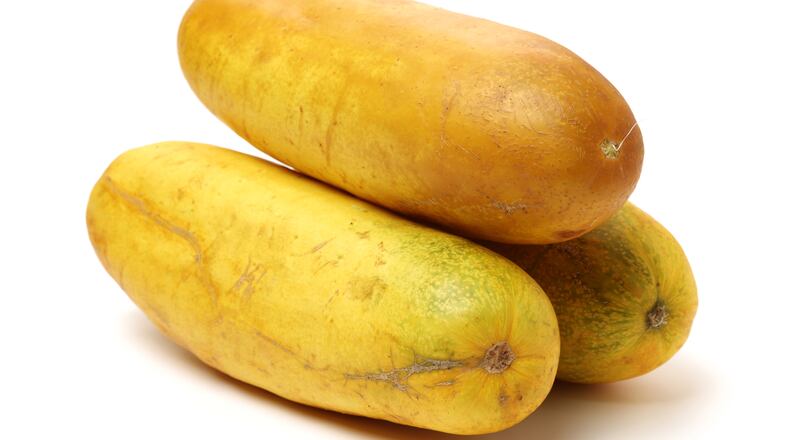Dear Jessica: Last year around this time we had pumpkins out and left them for the squirrels to eat. The seeds were left to grow. We started our cucumbers from seeds in the house in April, and once they sprouted we planted them where the pumpkins had been. In time, we started to get “cucumkins.” I didn’t see any pumpkins or cucumbers, just these. — Kelly Cornfield
Dear Kelly: It’s a lot more fun to believe you created a Frankenfruit, so I’m sorry to be a killjoy. The truth is you didn’t actually grow pumpkin-cucumber hybrids. Hybridization is the practice of cross-pollinating two varieties or cultivars of a plant. Sometimes this is done intentionally, in hopes of growing a new plant that has certain desirable traits of each of its parents, and sometimes this occurs naturally when wind and insects move the pollen from one plant to another. But it doesn’t happen by planting two types of seeds in the same bed. And although cucumbers and pumpkins belong to the cucurbit family, they are different species, so it simply isn’t possible — just as you can breed a poodle with a pit bull but not with a cat.
I considered that your plant might have contracted a virus, which can lead to yellow fruit, but cucumber mosaic virus affects leaves before fruit — and you would have noticed crinkled, puckered, downward facing, spotted, sick-looking foliage. Besides, affected fruit is mottled yellow and clearly looks sick. Your photos do not depict disease.
So here’s the boring truth: Your “cucumkins” are cucumbers that were left on their vines past their maturity. When cucumbers become overripe, even slightly, they begin to lighten — to yellow in spots, at first, before turning orange, sometimes very quickly. This may be hard to believe, but depending on the variety and the weather, cucumbers can go from not-quite-ready to mature to past-maturity in just a day.
Dear Jessica: I’m writing in for my technology-challenged father, John Cofone. He would like to know the best time to trim the Leland cypress trees in his Bethpage backyard. — Christine Cofone
Dear Christine: Leyland cypresses should be pruned from midspring through August. Pruning after August isn’t advised because it wouldn’t allow enough healing time before frost sets in.
The trees can grow up to six feet per year, reaching up to 70 feet tall and 15 feet wide if left to their own devices under the right conditions. There are two ways to trim them, depending on your taste and the amount of space available. If you like their natural informal habit, each branch should be pruned individually, taking care to make cuts just ahead of lateral branches and to leave lower branches longer than upper ones to retain an overall pyramid shape.
Alternatively, they can be sheared into hedges. When doing so, it’s important only to cut where there’s green growth. If you cut deeper into mature brown branches to where there are no needles, those areas will not fill in but remain brown. Be sure to keep the bottom of the tree wider than the top.
Leyland cypresses also can be shortened, or “topped,” to control their overall height. This practice is only acceptable for some evergreen trees and never should be performed on deciduous trees, which lose their leaves in autumn. When shortening Leyland cypresses, cut the central leader (the main center branch that forms a point at the top of the tree) no more than one-third of the way to where it meets a lower branch.
About the Author




